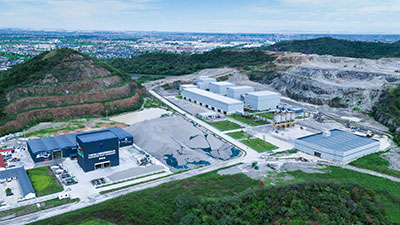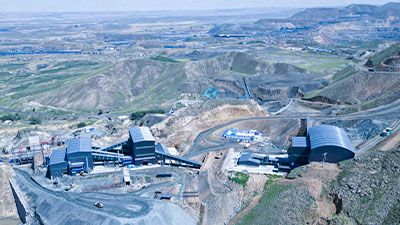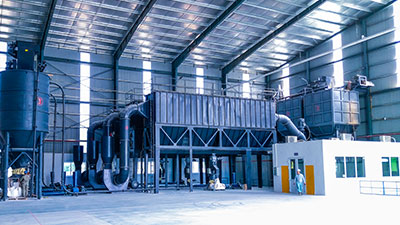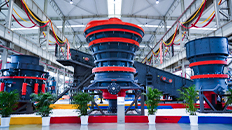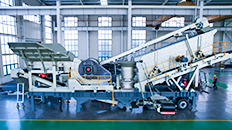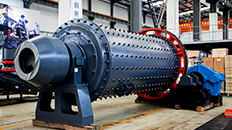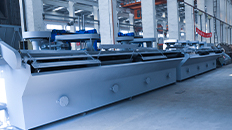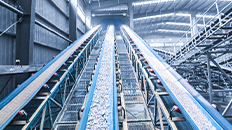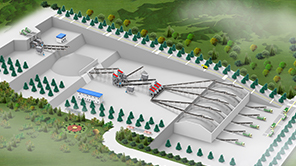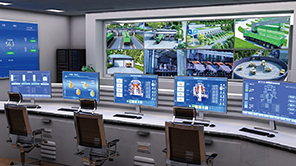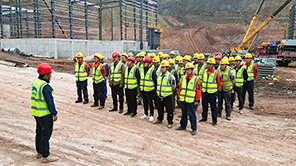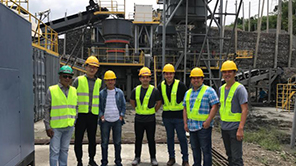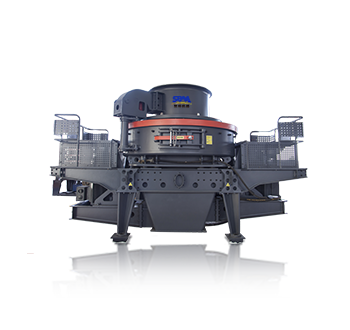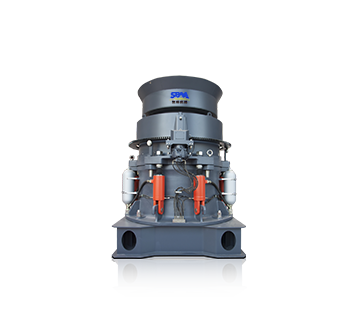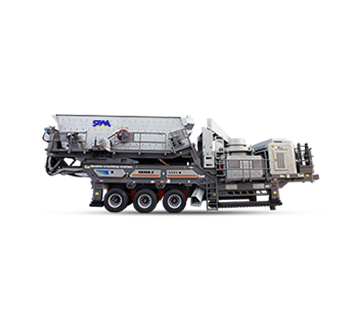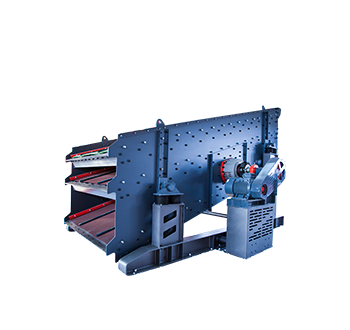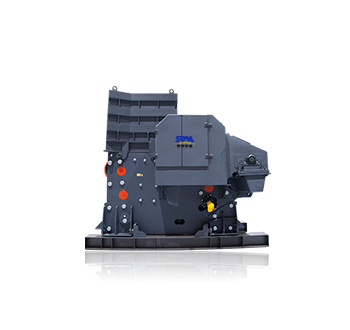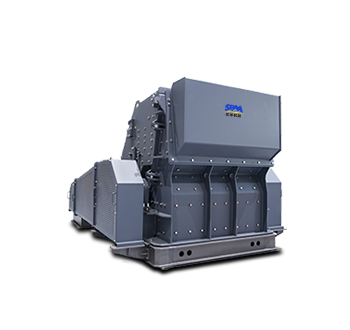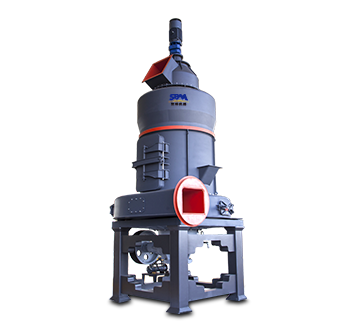Summary:The main parts of a jaw crusher include the frame, the eccentric shaft, the flywheel, the toggle plate, the cheek plates, the jaw plates, the pitman, the eccentric shaft and adjustment wedge.
Jaw crushers are essential pieces of equipment in the construction, mining, and quarrying industries. They are used to crush large materials into smaller pieces, which can then be processed for further use or disposal.
The main parts of a jaw crusher include:
- Frame
- Flywheel
- Jaw Plates
- Toggle Plate
- Cheek Plates
- Pitman
- Eccentric Shaft
- Adjustment Wedge
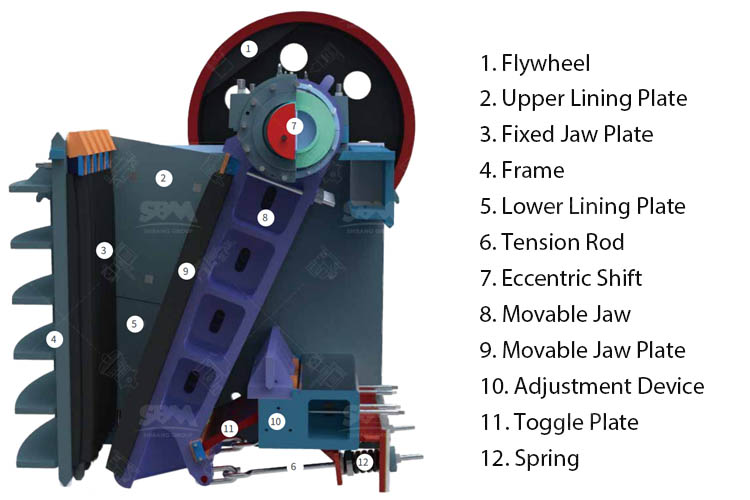
1. Frame
The frame is the main structural component of the jaw crusher and is responsible for supporting the other parts of the machine. It is typically made of welded steel or cast iron and is subjected to a great deal of stress and strain during operation. The frame supports the eccentric shaft, which is a rotating shaft driven by an electric motor or a diesel engine. The eccentric shaft is connected to the flywheel, which helps to balance the load on the crusher and transmit the power from the motor to the crushing mechanism.

2. Flywheel
The flywheel is a large, heavy wheel that is attached to the end of the eccentric shaft. It helps to balance the load on the crusher and transmit the power from the motor to the crushing mechanism. The flywheel is typically made of cast iron or steel and is subjected to a great deal of wear and tear during operation.

3. Jaw Plates
The jaw plates are the primary wear parts of the jaw crusher and are responsible for crushing the material as it is fed into the crushing chamber. They are typically made of manganese steel or another hard material and are subjected to a great deal of wear and tear during operation. The jaw plates are designed to be easily replaceable, so that they can be replaced when they become worn or damaged.
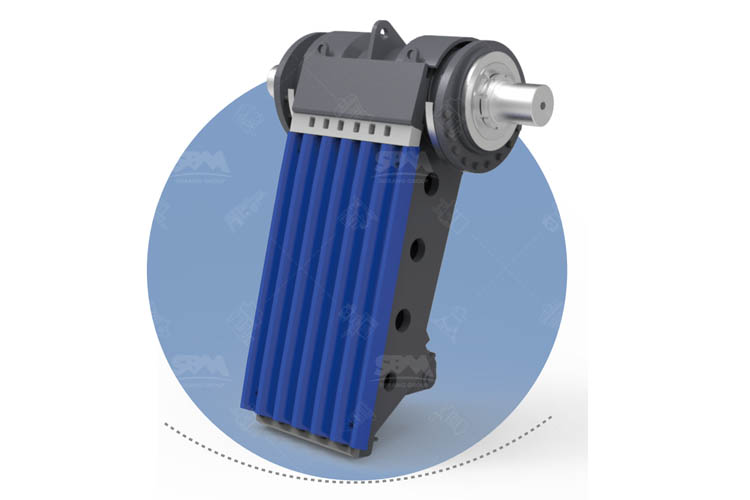
4. Toggle Plate
The toggle plate is a component that connects the pitman to the cheek plates and helps to transfer the force from the pitman to the cheek plates during the crushing process. It is typically made of cast iron or steel and is subjected to a great deal of wear and tear during operation. The toggle plate is an important safety feature of the jaw crusher, as it helps to prevent accidents by breaking the connection between the pitman and the cheek plates if the crusher becomes overloaded.
5. Cheek Plates
The cheek plates are located on either side of the jaw crusher and are used to crush material against the stationary jaw. They are typically made of manganese steel or another hard material and are subjected to a great deal of stress and strain during operation. The cheek plates are an important part of the jaw crusher, as they help to guide the material as it is fed into the crushing chamber and prevent it from falling out.
6. Pitman
The pitman is the main moving component of the jaw crusher and is responsible for transferring the force from the toggle plate to the crushing mechanism. It is typically made of cast iron or steel and is subjected to a great deal of stress and strain during operation. The pitman is connected to the eccentric shaft via the toggle plate and is supported by the cheek plates. It moves up and down as the eccentric shaft rotates, crushing the material as it passes through the crushing chamber.
7. Eccentric Shaft
The eccentric shaft bearings are located at the ends of the eccentric shaft and help to support the shaft as it rotates. They are typically made of high-quality bearings and are subjected to a great deal of wear and tear during operation. The eccentric shaft bearings help to reduce the friction between the eccentric shaft and the frame, allowing the crusher to operate smoothly and efficiently.
8. Adjustment Wedge
Adjustment Wedge: The adjustment wedge is a component of the jaw crusher that is used to adjust the size of the discharge opening. It is made of high-strength steel and is responsible for moving the toggle plate and the toggle plate seat.
In conclusion, the main parts of a jaw crusher include the frame, the eccentric shaft, the flywheel, the toggle plate, the cheek plates, the jaw plates, the pitman, the eccentric shaft and adjustment wedge. These components work together to crush large materials into smaller pieces, which can then be processed for further use.

